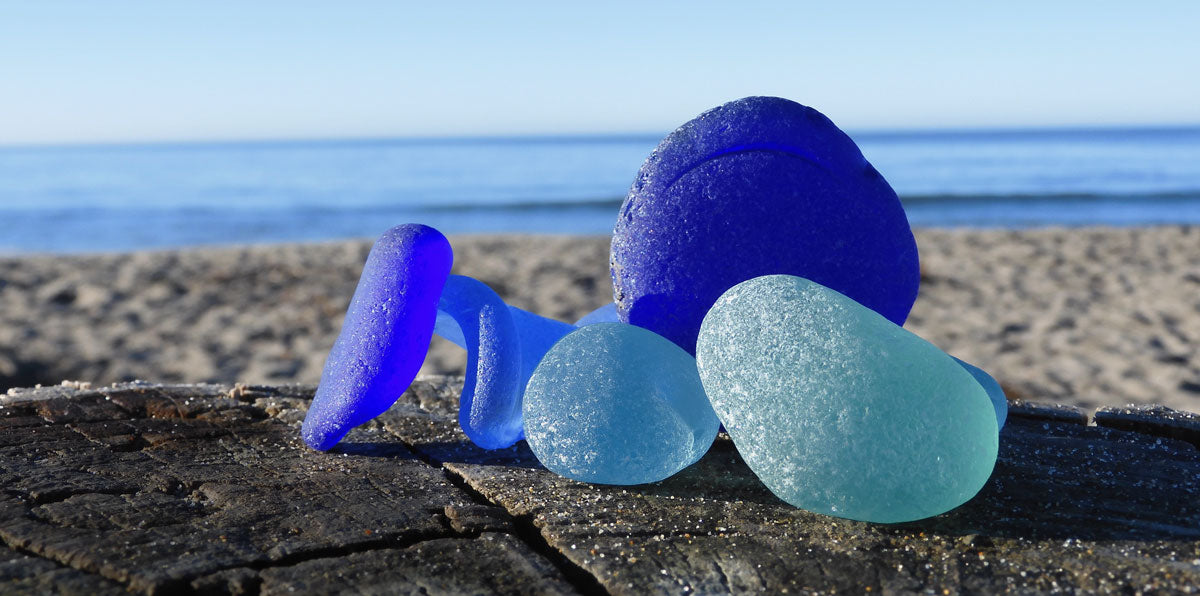Seeded Glass

While beachcombing on one of her regular beaches recently, sea glass jeweler Ingrid Lynch was excited when she saw a gorgeous blue splashing in the waves. “It’s not a color I’ve ever found in this location before,” she said.

Above left: Fake sea glass found in Hawaii (Ingrid Lynch). Above right: Real sea glass (Kirsti Scott).
Unfortunately, as she examined it closer, she noticed that the edges did not look like they had been smoothed naturally by the waves. “I immediately suspected that this was a piece that someone had cut, smoothed, and tumbled in a rock tumbler,” explained Ingrid. “I assumed they had thrown in it the ocean to give it time to appear genuine.”
This practice of throwing new, rough, or partially tumbled pieces of glass onto the beach is called “seeding.” And, while someone seeding the beach might think that they are doing future beachcombers a favor by adding something that might some day become beach glass, it just adds confusion.
One of the fun things about beachcombing is trying to figure out where a piece of sea glass originated, using clues like color, shape, size, patterns, and the beach where the piece was found. Many beaches have certain types of glass due to a history of glassmaking in the area, the presence of a town dump, or a harbor that was active during a city’s history.
When glass is deliberately thrown on a beach but comes from a glass factory from the other side of the world, it becomes a mystery that doesn’t fit in with the rest of the glass found on that beach. It can lead to wasted time while someone tries to figure out why it’s there. Even if it is a great color, like the blue that Ingrid found, it doesn’t belong on that particular beach. It would be like finding a tropical seashell off the north coast of Scotland.

Fake sea glass found in Hawaii (Ingrid Lynch)
Ingrid realized her assumption about the seeded glass was correct when she went back to the beach a few days later. “There at the top of the beach, above the high tide line, were two more pieces. Almost the exact same shape and with the same smoothed edges,” said Ingrid. “Needless to say, I was so disappointed. Not only was this person polluting the beach but the pieces they made would deceive people into thinking the sea glass is genuine.”
This article appeared in Beachcombing Volume 39: November/December 2023.
Ingrid is a Professional Member of the International Sea Glass Association.






